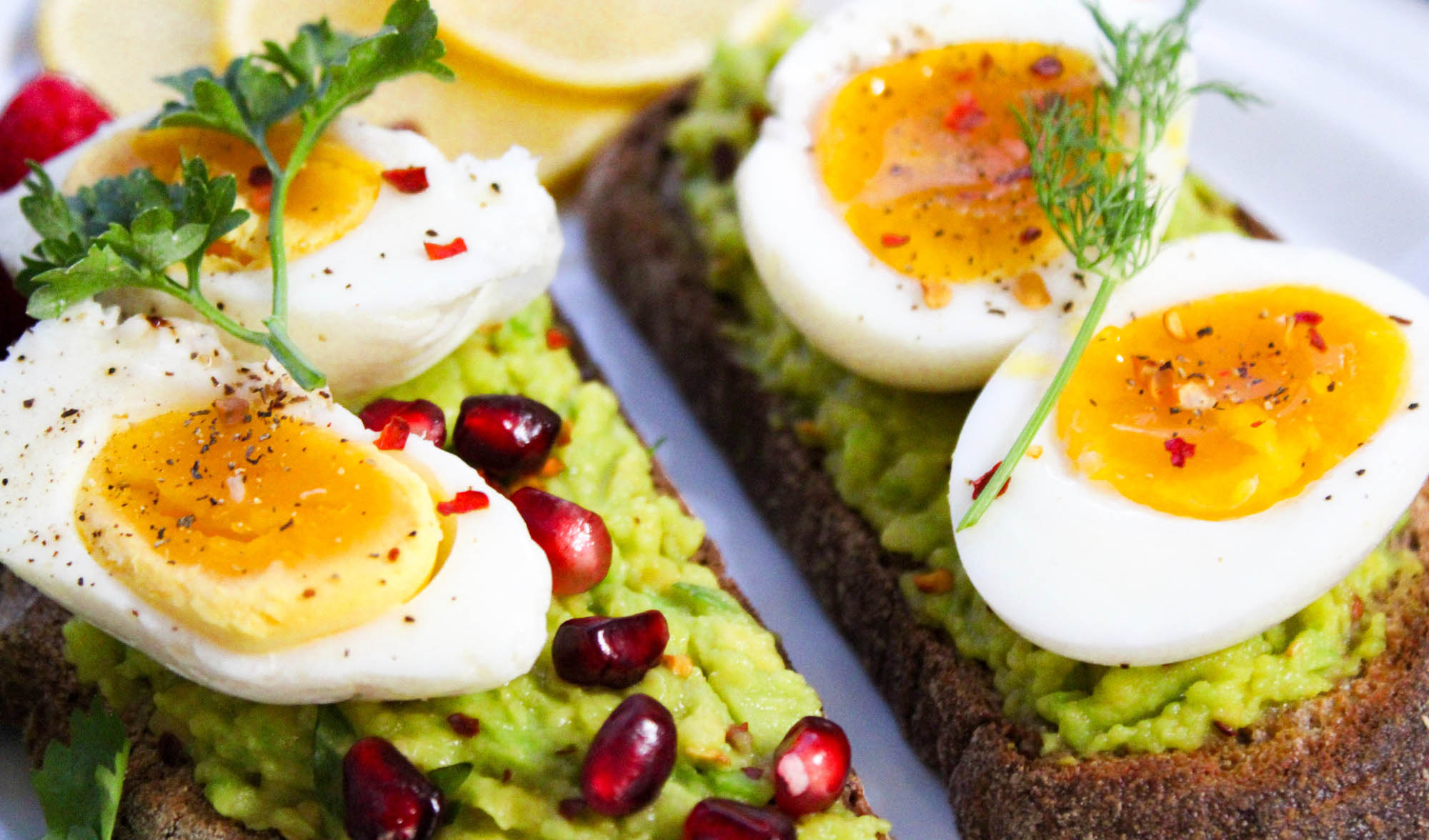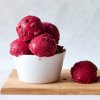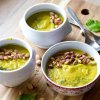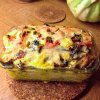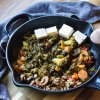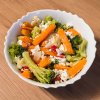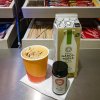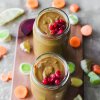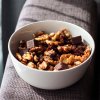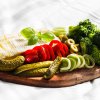JUMP TO
In this article I want to share with you all that I’ve learned through the years related to making healthy food choices, what you can eat for health and why, and what are my principles for going food shopping.
I’ve decided to put together a simple guide focused on making healthy choices when shopping for food. We won’t discuss about specific products, diets or certain protocols here. Instead we will be focusing on simple natural intuitive eating, what are the best categories of foods that you can buy and how to always make the best choices when it comes to food shopping.
Why diets don’t work
There are a lot of diets out there and there’s also a lot of confusion related to what foods we should consume and in what quantities or proportions. While I’m not the advocate of any type of diet, I would say that many of these ways of eating have at least some good parts.
In all the years that I’ve studied and experienced with food, my focus has always been to incorporate the good aspects of every diet into my eating habits.
What I don’t like about diets are the following two aspects: the concept of limiting some foods and the idea of counting calories. As you may know, each diet comes with some sort of list of “approved” ingredients, and this situation alone may create confusion. Not to mention the idea of counting calories, a practice which I find to be one of the biggest jokes ever made on the human body.
So, what if you could eat simple healthy delicious food without having to worry about diets, programs, or calories? I don’t think it’s smart to complicate our already complicated lives with diets that will eventually create more stress. Instead, I suggest that you concentrate on these 2 words: REAL FOOD.
In my humble opinion, we should all be eating real food, preferably organically sourced, unprocessed and unrefined, without additives, preservatives and fillers of any kind. Sounds good to you? Sounds perfect to me and I’ve done it for the past 6 years. This “real food formula” worked amazing for me and for all people that I’ve shared it with.
I believe that we don’t need diets or regimented programs in order to live a healthy joyful life. What we need is common sense and to keep things simple and natural in the kitchen.
The key towards perfect health is not searching for the perfect program, but rather develop a healthy lifestyle that will be easy to manage and fun to experience every single day. There are no formulas towards reaching perfect health, only guidelines that you can take into account and adapt for your own life situation.
With the concepts of real food and no-diet in mind, let me share with you all my secrets towards making healthy choices related to food. Let’s get started!
The “Buy Me” list
You’re probably reading this article because you want to learn how to easily identify healthy food. I’m happy to say that it’s not hard at all and, in fact all you really need to know is this: eat simple foods, unprocessed and unrefined, foods that are as “real” as possible.
When you go food shopping, make it a priority to spend time in the store (at least the first few times, until you familiarize yourself with the store). Don’t just buy the foods you think you need and get out in 5 minutes, Spend some time exploring every aisle in detail, the way a child would do it, with passion in your heart and joy of discovery, Get to know the store and the products, and see which are the ones that inspire you to cook healthy delicious meals. Look at the packages and read all the labels, concentrating on the ingredients list and the country of origin.
Familiarize yourself with all those interesting plants, study their colors, shapes and textures. Learning to see food in terms of beneficial nutrients, and not as an emotional response generated by your mind, is the first step towards being in charge of your own health. Food is wonderfully nourishing. Food is healing, energy and information. If you don’t know your healthy food, it’s time to get to work!
When it comes to eating healthy, this is the list of foods that you should be looking for. Later on, in one of the next sections, we’ll discuss the best strategies that will help you choose quality products from these categories.
This is the healthy food list by category:
- Vegetables – all vegetables, not only leafy greens
- Legumes – dry beans, green peas, green beans, chickpeas, lentils
- Some Grains – quinoa, rice
- Fermented Foods
- Berries and other low-sugar fruits
- Healthy Fats – avocado, coconut, olives, and their derivative oils
- Healthy Oils – avocado oil, coconut oil, extra virgin olive oil
- Nuts – walnuts, pecans, cashew, hazelnuts, macadamia, etc
- Seeds – sunflower seeds, pumpkin seeds, chia seeds, hemp seeds, etc
- Nut Butters – almond butter, cashew butter, hazelnut butter
- Dried Fruit – classic dried dates, Medjool dates, dried figs, raisins
- Free-range organic eggs
- Healthy Dairy – raw pastured butter, raw milk, full-fat yogurt, sour cream and aged cheeses
- Healthy Meats – if you consume meat, choose meat that comes from responsibly grown animals (grass-feed, wild)
- Beer and Whine – if you drink beer or wine, search for craft beer and real wine (French, Italy, Spain)
The “Skip Me” list
Use these guidelines as a way to understand what separates real food from unhealthy food. These are the types of foods that I believe anyone should avoid because these so-called foods do not promote health in any way, instead they are toxic inflammatory products that should not be named food.
Processed foods – Maybe one of the most dangerous things you can eat, processed foods are loaded with unhealthy substitutes, anti-nutrients and basically anything that is a food waste. If it comes from a factory, you should probably stay away from it. If you cannot understand the ingredients list due to uncomplicated names, you should definitely avoid it.
Seed oils of any kind – This includes refined seed oils like sunflower oil, safflower oil, canola oil or cheap olive oils, as well as all those cold pressed oils. Let me explain what seed oils are bad and why refined seed oils are extemely unhealthy to consume.
The problem with seed oils (refined or cold pressed) is related to the types of fats contained in the seed from which the oil was extracted. Nuts and seeds come with a type of fat called PUFA, which is sensitive to heat, lights and oxygen. Due to the extraction methods which involve heat, light and oxygen, these oils oxidize immediately after extraction (obviously, from being exposed to heat, light or oxygen). Keep in mind that we aren’t even discussing the chemicals used in the extraction process, especially with factory processed oils.
When consumed, these oils contribute to the production of free radicals, which in turn may lead to all sorts of associated health problems, especially long-term heath conditions. This means that, while you probably won’t see an immediate toxic reaction after consuming refined seed oils, their toxic nature will have a slow impact towards your long-term health, leading to health conditions like leaky-gut, digestion problems, obesity, and even cancers.
Products with suspicious ingredients – Avoid products that contain ingredients who’s names you can’t pronounce, or who’s purpose you don’t understand, or ingredients that you know that shouldn’t be there in the first place. Remember that healthy natural foods should not contain any kind of dubious ingredients.
Toxic ingredients – Think soy, refined seed oils, added sugar, cheap substitutes and fillers, added gluten, wheat, cornstarch, sirup, white flour, additives and preservatives of any kind. Real food should only contain real ingredients and shouldn’t be engineered to stay on the shelf for years.
Pasteurized foods – Products that have been pasteurized (except maybe for low-pasteurization, around 40-50 Celsius) have their natural enzymes destroyed, as well as vitamins and minerals lowered. While these aren’t technically toxic for you, keep in mind that they may be hard to digest since their natural enzymes have been destroyed by heat.
Keep in mind that some products need to be pasteurized as part of the production process (think cooking) but things like fermented foods will lose their nutritional value if pasteurized. As a general rules, know that pasteurization is designed to increase shelf life but considerably lowers nutritional value.
Added sugar – If sugar was added to a certain product, this should be a red flag for something like processed foods. Sugar is the number one way to impair your immune system, so my advice is to think twice before consuming products that come with added sugar.
It’s worth mentioning that not everyone experiences the sweet taste of sugar in the same way. What I mean by this statement is that once you lower or eliminate completely your sugar intake, your body will adapt and you’ll start perceiving sugar as being very sweet. Think about it! How sweet the sugar seems to be is in direct correlation with the sugar intake. Why is this happening? Simply because, with time, the cells in your body will adapt and will become more sensitive to the sugar molecule.
Vegan products made with soy – These products are one big trap especially for people thinking they are eating healthy. Soy should be fermented correctly, otherwise it’s toxic for our system due to its high anti-nutrient content, enzyme inhibitors and estrogenic compounds.
Vegan products made with toxic ingredients – In fact, there are many so-called vegan products out there that lack even the most basic nutrients. Vegan foods made with any of the following ingredients are toxic: soy, wheat, cornstarch, sirup, flour, seed oils, sugar, additives, preservatives or fillers.
GMO foods or products containing them – The most popular genetically modified crops include soy, corn or canola. The problems with GMOs and health are so many that these genetically modified foods should be a red flag for anyone. Besides their low nutritional value, one big problem is that GMOs destroy the soil in which they are grown, due to the intensive use of herbicides. GMOs destroy the local farmer’s economy and aren’t in any way nutrient-rich foods, as they are advertised.
Processed grains – Grains are high in carbohydrates while being low in other nutrients (including healthy fiber). They are also high in anti-nutrients like phytates, lectins and gluten, which can actually interfere with your body’s absorption of certain mineral or with your digestion and gut health. White flour and products made with white flours are the worst.
Unhealthy meat – Meat should come from healthy animals that haven’t been fed a grain-intensive diet, instead the animals should healthy and should not require hormones or antibiotics to survive. This might come as a shock for many of you, but most of the meat you find in supermarkets is extremely toxic and it’s damaging for your entire system.
Processed meats – Processed meat products are prepared in a factory using some of the cheapest ingredients, plus lots of aromas, fillers, additives and preservatives. Think about salami, sausages and an assortment of processed meat products available in any supermarket. If you want to consume something like a salami or sausages, choose the ones from local producers where you can follow the ingredients list closely.
Unhealthy eggs – Avoid consuming eggs that come from chickens who did not spent time outside in the sun, walking on land, and having at least some of their diet based on worms or insects. Always, always choose free-range organic eggs as they are better for the environment, for the chickens and ultimately for you.
Frozen junk – pizza, meals, pre-cooked meals, pastry – These are basically processed foods loaded with additives, refined seed oils and sugars. Some of them even come in some sort of aluminum foil that’s very toxic when exposed to heat or acids. These frozen junk foods are designed to keep you dependent on them while, in reality, consuming them will lead to all sorts of gut and digestion problems, obesity, diabetes, high blood pressure and all the complications that come with these health conditions.
Most cookies, treats, pastry – These high-sugar grain-based refined products are loaded with oxidized oils (refined seed oils) and trans fats, and are specifically designed and tested by the food industry to act as a drug for the mind. They work agains you, sabotaging your system by means of “empty calories” and unhealthy high carbohydrate content. These “foods” do not provide any kind of beneficial nutrients to support a healthy lifestyle. Instead they damage your gut flora, mess-up you stomach acid, leading to leaky-gut, obesity, diabetes, high blood pressure, eczema, heart disease and ultimately cancers.
Breakfast cereals – Needless to say that breakfast cereals are low in real nutrients, while being high in refined seed oils and refined sugars, plus lots of additives that shouldn’t be present in anything named food. Breakfast cereals do not have any kind of nutritional benefit for anyone, instead they sabotage your system from the inside out. They make you dependent on sugar and on that sweet taste, keeping you in that sugar loop for the entire day, every day.
Most restaurant food – My advice is to avoid food cooked using refined seed oils, added flour or added sugar, plus all of the above. Another important aspect with restaurant food is that all the plants should be washed correctly in order to remove pesticide residues. Food should be cooked at low temperature in either cats iron, ceramic or stains less steel pots or trays.
Fast-food – What we’re talking here is “food” put together from low-quality ingredients cooked at high temperatures using plenty of refined seed oils and served with white bread. Beneficial nutrients are destroyed and oxidized omega-6 rich oils make the situation even worse when consuming these junk foods. Made from a combination of white bread, fried potatoes, industrially farmed meat and other low-quality ingredients, using high heat cooking methods, you cannot find one single good thing about fast-food.
Sugary drinks, juices, sodas – These so-called “drinks” are high in sugar and so low in real nutrients that they couldn’t possible generate any kind of positive health benefit to anyone. The taste of commercially made juices and soda (no matter the brand or type) is always enhanced with additives and artificial sweeteners, making these products more appealing to the average consumer. Always avoid!
Regular milk – Think pasteurized milk, UHT milk, milk with added vitamins and minerals, homogenized milk, and derivatives that are made using the lowest quality milk. Ultra high temperature (UHT) processed milk is simply a drink devoured of nutrients and bad for one’s digestive system.
I used to drink milk on a daily basis but I’m happy to say that many things improved in my health after completely stopping consumption of regular drinking milk. Note that cheeses are fermented dairy products are not to be placed in the same category as drinking milk. Also, raw milk that comes from small farmers should be consumed if the animals are healthy and grass-fed.
Most smoothies and health juices – Unless you buy smoothies made with more veggies than fruits, you’re probably buying a high-sugar drink. Also, smoothies that aren’t freshly made on the spot, are most-likely pasteurized which means they end-up having less to no vitamins, minerals, enzymes and phytonutrients.
When you’re at the food store
In this section I want to share with you my tips and tricks for going food shopping. While not all of these may apply to you right now, I believe that you’ll find these advices useful in the long run.
Here are some of things that you can do that will help you to improve your food shopping experience (in the supermarket or at the local farmer’s market):
- Ditch those shopping lists. You don’t need them! Do not shop on auto-pilot and do not hurry to finish shopping to quickly.
- Instead of using a shopping list, let yourself be inspired by recipes posted on websites like Instagram, Foodgawker and Yummly..
- Learn to appreciate real food and learn to trust your instinct. Who says you can’t go to the store on an empty stomach? Going food shopping on an empty stomach will trigger the personal chef in you and all that cooking creativity. Just make sure to make a conscious decision and always avoid consuming unhealthy foods out of hunger and impulse.
- Don’t eat cooked foods at the store because those are as the same as fast-food.
- Read the labels for everything that you buy. You need to know what you put in your body. Use your phone to search for the meaning of ingredients that you don’t understand.
- Walk through the entire store, spend some time there, get to know every aisle and look at different products.
- Don’t just buy the same product over and over again. Experiment with other choices as well.
- It takes at least 1 hour to make decent food shopping so be prepared.
- Look at what others buy. You’ll be surprised of the unhealthy choices that many people make. Learn from those choices but do not judge.
- Pay attention to food toxins. Don’t get products that contain additives, preservatives or fillers of any kind.
- Follow this simple rule: If man made it you probably shouldn’t be eating it / If it’s in season or it is fresh, you should probably eat it.
- Make sure to cycle through all the plants as much as you can, buying some plants now and others the next time. Think at ways of combing different vegetables into your favorite meals or let yourself inspired to create new meals using new ingredients.
- Sometimes it’s wiser to choose organic even if it costs more (see dirty-dozen list).
- Don’t buy veggies and fruits from countries that grow these plants industrially, unless those are your last alternative (for Europe, avoid products from South Africa, Holland, Turkey).
- Try to buy more veggies than fruits because vegetables have less sugar (fructose) and more nutrients overall.
- Aim for those fruits that aren’t very sweet, especially if they’re not in season where you live.
- Cycle through your choices often enough to be able to eat from all the categories of nutrients (think vitamins, minerals, and phytonutrients).
- Make sure you have at least one source of healthy fats in your shopping basket.
- Shop in different stores and you will discover different kinds of products.
- Don’t be afraid to try new “strange” plants.
- Your smartphone is your best friend when going shopping. When something is unclear or you want to find inspiration, search online while you’re at the store.
- Meats – Choose cuts that have bone, even if they’re cheaper. If you don’t know how healthy the animal was, choose low-fat cuts because toxins always accumulate in the fat tissue. Don’t be afraid to ask where the meat comes from.
- Fish – Go for small wild fish. Avoid farmed salmon or farmed fish in general.
- Don’t buy canned foods unless you don’t have other options available. For plants, choose frozen plants instead of canned. As an exception, some types of canned beans may be ok, as long as they don’t have additives and preservatives added.
- Frozen veggies and frozen berries are always cheaper and super healthy, and their nutritional value is practically intact.
- Are you having enough spices to inspire you into cooking creative meals?
- Try to buy things that are fresh, have few ingredients and a short expiration date. A short expiration date simply means that these products aren’t highly pasteurized or processed with chemicals to make them last longer.
- Skip your favorite sauce and instead learn how to prepare it at home, in under 15 minutes. Almost all the sauces you’ll find at the store are loaded with low-quality ingredients.
- If possible, buy products that come in glass jars or bottles instead of plastic. Remember that acidic foods will leach chemicals from the plastic into the actual food.
- Don’t get too much bread, better have a high quality bread even if it costs more. True sourdough bread, danish rye bread, true french baguette, all of these are great options.
- Don’t skip the discounts aisle, sometimes you’ll find lots of good quality products, especially plants.
- Skip the classic drinking milk that you’ll find in supermarkets. Get instead raw milk from a local farmer, if you can.
- Cheeses – Search for those aged cheeses, made from raw milk. Start by reading the labels or follow the smell of real cheese. Shoot for true European cheeses (French, Holland, Switzerland, England, Italy, Spain, Romania).
- Don’t buy more than 3-4 dairy products, people tend to buy too much dairy anyway.
- Don’t buy too much from anything, even if it’s on sale right now. You need variety in your shopping list, not quantity.
- Learn the real prices and understand the value of the food that you’re buying. You’ll be surprised to find out that, for a price of a designer’s coffee, you can actually buy 1 kg of organic fruits. Talking about putting things into perspective!
- Don’t buy things labeled “low-fat” as they are most certainly unhealthy foods packed with additives and fillers.
- Pay attention for ingredients like added vitamins A, C or D. This is a clear indication that the product in question was highly pasteurized and low on nutrients. As a consequence, artificial vitamins have to be added to compensate for the lack of nutrients resulted from the production process. Avoid!
- Try buying fresh spices – dill, parsley, lovage, mint, thyme, basil.
- Get lots of greens especially when they are in session where you live.
- Choose organic as often as possibly, especially for eggs, dairy or for those plants with edible skin.
- Always have enough ingredients in order to prepare a healthy snack when you arrive home. This way you won’t be tempted for sugary foods or the classic pizza.
- Skip alcohol, it’s not good for you … or choose naturally fermented beverages (raw, unpasteurized, craft beer, real wine).
When you arrive home
Here’s what I do when I arrive home with those bags of delicious real food:
- Unpacking can be fun – Ask someone to help you unpack and put all that food in order. This is a great opportunity to do things together as a family.
- Wash your plants – Please don’t put your fresh veggies and fruits into the fridge before washing them properly.
- Keep a photo journal – Take pictures with everything that you’ve brought. In a few weeks you’ll see amazing improvements and you’ll see your transformation journey.
- Place plants on display – If possible, let some of the fruits and veggies in sight, so you’ll be inspired to either eat them raw or cook them in creative ways. Let your creativity flow!
- Frozen plants go into the freezer – Make sure that frozen fruits and veggies have room in the freezer, otherwise they can go bad in 1-2 days (yes, even in the fridge).
- Organize your fridge – You don’t need a bigger fridge, you just have to learn to organize it better.
- Take the time to unpack – Unpack foods like cheese and place them in glass casserole with a lid. This way your fridge won’t smell like cheese and will even look nicer.
- Recovery snacks are great – Tired from shopping? Now it’s the time to eat that mandarine or apple or maybe a banana with cashew butter on top.
- Relax after shopping – Relax on the couch or prepare that 30 mins meal but don’t overdo it. Stay away from too much coffee or sugar, instead just relax and deep breathe, put some calming music and enjoy the present moment.
Instead of conclusions
Making healthy food choices is certainly not an easy task, especially if you have been unaware of the unhealthy options around you. It takes time and it takes a positive attitude towards change. Without first having a mental shift and without setting a clear intention of living healthy and disease-free, it will be very hard (read impossible) to change and to make healthy choice long term.
While these advices may look like something very complicated at this moment, know that you don’t have to apply everything right now. Change takes time and it certainly takes concentrated effort and a lot of patience. Allow yourself the luxury of mistakes but, in the same time, stay focused on your goal of making simple healthy choices.
Start with simple steps and with those healthy choices that are easy to do for you right now. Once you build-up some momentum, you can start working on the bigger issues. Make a list of priorities and focus on your health goals. Keep that list with you at all times and read it aloud every day, a few times. This way you’ll start programming your subconscious mind to focus on health.
After a few weeks of making conscious healthy choices, this new way of doing things will become a habit. A new you woll be born! Once that is happening, it won’t feel so hard anymore. Now you are setting yourself up for a lifetime of health and that is one of the most beautiful ways to live life, wouldn’t you say so?
Thanks for reading so far and I wish you all the best in your healing journey. Don’t hesitate to reach out in case you have questions or suggestions.
I’m curious to know what are the food choices that you want to change and why? Let’s chat in the comments!
